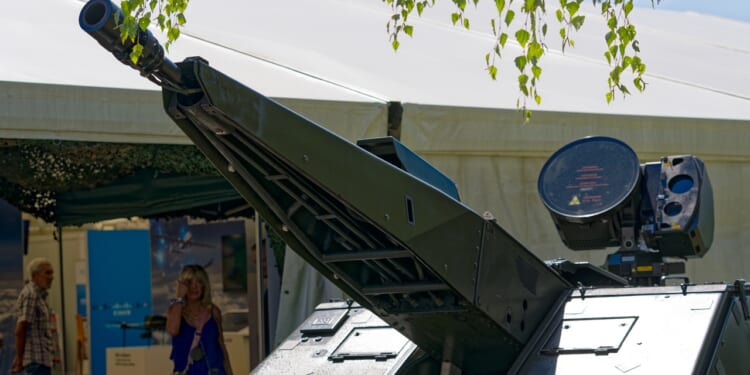Much remains unknown about the European laser defense system—including its effective range, its vulnerability to weather conditions, and its effectiveness at engaging multiple targets.
Two European defense firms, Rohde & Schwarz and TRUMPF, have partnered to build a European counter-drone system. This counter-drone weapon will combine detection and tracking sensors, such as radar and spectrum monitoring, with a high-energy directed energy weapon (DEW) to neutralize incoming drones.
The target is to protect critical infrastructure and restricted airspaces from using unmanned aerial vehicle (UAV) incursions—both small drones and possibly larger unmanned vehicles. Thanks to Europe’s renewed commitment to rearming—although we’ll see how comprehensive this rearmament program really is over time—the contractors building the system claim it is a truly sovereign defensive system. According to them, no aspect of this program relies upon non-European suppliers.
Why the Europeans Need Better Anti-Drone Weapons
Based upon a layered defensive concept, the plan is to detect, classify, and then engage any drones with this DEW system. The sensor component of this weapon is provided by Rohde & Schwartz while the laser component comes from TRUMPF.
This matters because Russian drones have become a growing threat to the region. Such drones are hard to track and kill with existing air defense systems. And enemy states can use their drones to conduct surveillance, engage in targeted strikes, covertly sabotage key infrastructure, and harry the air defenses of countries subjected to these drone swarms. A cheap Russian drone can force European defenders to use much more expensive interceptors against them.
Therefore, the new DEW counter-drone system that the Europeans are building for themselves would help to end that imbalance. A laser-based system offers advantages, too. Using lasers can be cost-effective and the weapon itself could allow for rapid re-targeting. What’s more, there’d be less explosive collateral damage from this system. Further, this weapon could potentially defend large drone swarms.
Will the European Counter-Drone Laser Become a Reality?
While a necessary development, there are many unknowns about this system. For example, the exact laser power output remains murky, as does its effective range. A key element of this weapon would be simultaneous engagement of drone swarms, as opposed to individual targets. And that remains unknown as to whether it can eliminate multiple threats at once. Lasers generally are affected by environmental limitations (such as weather, smoke, and the like), and no information has been given as to whether the engineers of this European counter-drone system have designed countermeasures to those weather problems.
Nevertheless, the partnership between these two large European firms suggests a real—and growing—market for directed energy counter-drone weapons. Interestingly, these systems are not just being developed for the militaries of Europe. They are being pitched to civilian airports and other key points of civilian infrastructure, indicating that in rapid time counter-drone technology has moved from the purely military realm to a semi-commercial defense space.
As with all such stories, there is much hype involved. Europe has become masterful in putting on a big show about how they are rearming and indigenizing their capabilities to be less reliant on the United States. Yet there has been little movement in actually following through on these claims in a timely and reliable manner. Let us hope that this counter-drone system can defy those negative trends.
About the Author: Brandon J. Weichert
Brandon J. Weichert is a senior national security editor at The National Interest. Recently, Weichert became the host of The National Security Hour on America Outloud News and iHeartRadio, where he discusses national security policy every Wednesday at 8pm Eastern. He is also a contributor at Popular Mechanics and has consulted regularly with various government institutions and private organizations on geopolitical issues. Weichert’s writings have appeared in multiple publications, including The Washington Times, National Review, The American Spectator, MSN, The Asia Times, and others. His books include Winning Space: How America Remains a Superpower, Biohacked: China’s Race to Control Life, and The Shadow War: Iran’s Quest for Supremacy. His newest book, A Disaster of Our Own Making: How the West Lost Ukraine is available for purchase wherever books are sold. He can be followed via Twitter @WeTheBrandon.
Image: Shutterstock / Michael Derrer Fuchs.


















